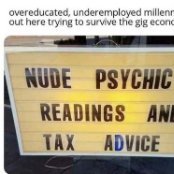91 Or 95?
-
Recently Browsing 0 members
- No registered users viewing this page.
-
Topics
-
-
Popular Contributors
-
-
Latest posts...
-
44
Crime Drunk Brit Attacks Bar Worker, Hurt by American Customer
Looks all even to me. The British guy hits like a girl. The American looks to have pulled him off the woman, and he was so drunk and brittle his bones broke. -
57
USA Trump’s Odd Speeches Raise New Doubts About His Mental Acuity
He did it again last weekend regarding the comedian and social commenter Charlemagne tha God. He's kind of an equal opportunity racist, however. Yes, Blacks originated from "sh!t hole" countries. Everybody south of the border is either a murderer or rapist. Haitians eat your pets. -
44
Crime Drunk Brit Attacks Bar Worker, Hurt by American Customer
I was in London and a girl was being 'roughed up' by a bloke, holding her arms........obviously her beau or ex......quiet road, no one about. So I went over and asked are you okay, can I do anything to help? She turned round and said ......"Yes. Eff off and mind your own business".......555 -
12
Atlanta Mother Sentenced to Life for Killing Sons in Grisly Oven Incident
Why does US justice take so long? A very simple case ...2017 8 years ? -
12
Report Police Raid Temples to Arrest 181 Hidden Crime Suspects
Seems like a good start. -
3
How Joe Biden and Donald Trump's border policies compare
🤣........You're now pulling out 2 year old threads on Biden.......🤣 You really should think about seeing a specialist on your phobia......🤕
-
-
Popular in The Pub







.thumb.jpg.82631abb512ae61a745d964452c5b1b9.jpg)



Recommended Posts
Create an account or sign in to comment
You need to be a member in order to leave a comment
Create an account
Sign up for a new account in our community. It's easy!
Register a new accountSign in
Already have an account? Sign in here.
Sign In Now